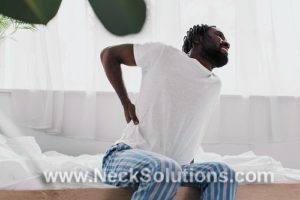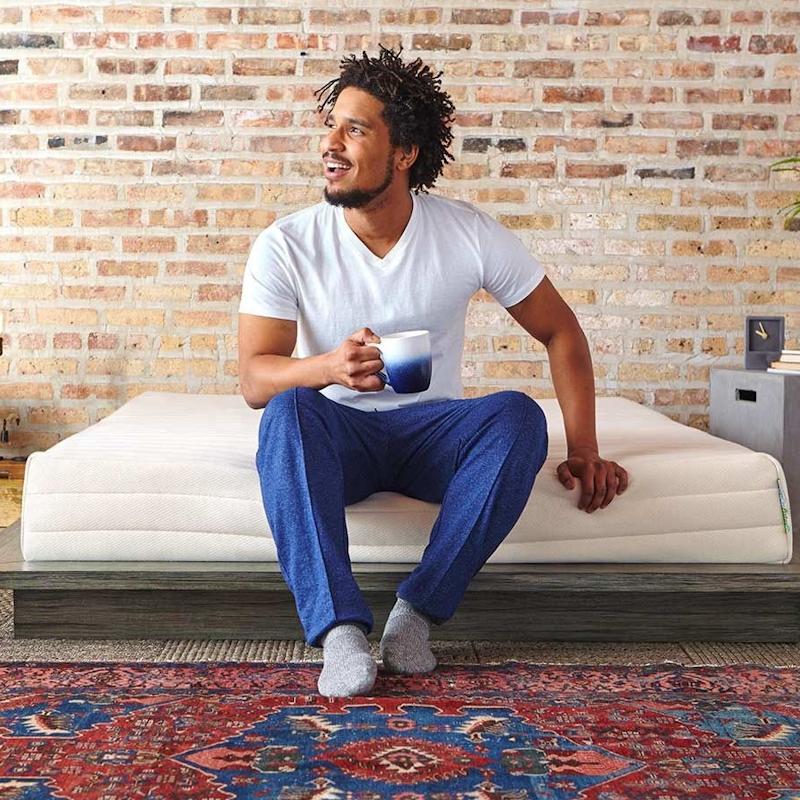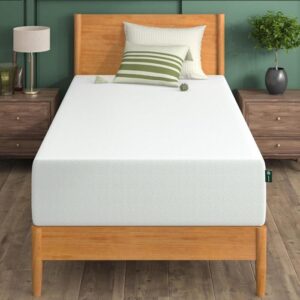A New Mattress Can Relieve Low Back Pain And Improve Sleep Quality
Lower back pain is one of the most frequently seen problems in general Chiropractic practice and is the second leading symptom, after the common cold, for physician visits. Since we spend a great deal of our lives sleeping, a good mattress can be a great way to start the day without lumbar spine pain.
 A study in the journal Pain, on Bed design and back pain, tested 4 selected bedding systems for patients with chronic low back pain. The following bedding systems were tested: (1) an orthopedic bed with a built-in bed board; (2) a standard 500-coil, inner-spring mattress; (3) a standard water bed; and (4) a hybrid bed of foam and water.
A study in the journal Pain, on Bed design and back pain, tested 4 selected bedding systems for patients with chronic low back pain. The following bedding systems were tested: (1) an orthopedic bed with a built-in bed board; (2) a standard 500-coil, inner-spring mattress; (3) a standard water bed; and (4) a hybrid bed of foam and water.
To qualify for the study, patients had to have low back pain for at least 3 months, not be surgical candidates, and not be in acute pain. The patients were randomly assigned a bed and slept on the bed for 2 weeks. Patients had to try at least 2 of the 4 beds. Fifteen patients completed the study, with 9 sampling all 4 beds. Results indicated that half the subjects improved on the waterbed, and half improved on the orthopedic hard bed.
A study in Medscape General Medicine on back pain outcomes using an air bed versus an inner spring mattress was presented at the annual meeting of the North American Spine Society. They compared an air bed with the patients’ current bed for pain and quality of sleep. Ninety subjects participated, with outcome measures derived from the SF-36 health questionnaire, pain diary, and Visual Analog Scales for pain and quality of sleep.
The first night of the study the subjects slept in their own beds. For the next 28 nights, they slept on an air bed; then they slept on their regular beds again for the next 14 nights. Assessments were carried out at baseline, 28 days, and 42 days. The air bed resulted in a 32% decrease in pain and a 74% increase in sleep quality.
In the Journal of Manipulative and Physiological Therapeutics, they studied the eEffectiveness of a selected bedding system on quality of sleep, low back pain, shoulder pain, and spine stiffness. Results suggest that subjects obtain significant improvement in shoulder and back pain, back stiffness, and quality of sleep after 28 days of prescribed bedding system use as compared with 28 days of personal bedding use.
Female subjects and those with lower body weight were more likely to significantly improve than heavier and more obese subjects. The participants in the study recorded significant improvement in shoulder (60.83%) and back (57.21%) pain, back stiffness (59.12%), and sleep quality (60.73%). These data suggest that reduction in pain and stiffness and a better quality of sleep occurred after use of the prescribed bedding system when compared with use of personal bedding system.
Subjective rating of perceived back pain, stiffness and sleep quality following introduction of medium-firm bedding systems studied in the Journal of Chiropractic Medicine indicated that issues that endured chronic back pain noticed instant as well as substantial relief simply by changing to a brand new mattress and the benefits continued beyond the first change to a new mattress. It additionally discovered that individuals who have been sleeping with mattresses 5 years or more ended up being considerably more prone to experience back pain as well as muscle stiffness.
The research team at Oklahoma State University quantified the association between bed systems and relief of back pain. The research examined the distinction with low back pain, spinal stiffness, quality of sleep, efficiency and comfort. Individuals noted instant and also continual advantages in every area of dimension right after the changeover to better mattresses, irrespective of age as well as weight. This had been particularly accurate regarding individuals that came into the research having substantial back pain problems; these people noted a sixty three percent progress with back pain.
The recommendations were for a medium/firm sleeping surface for those who experience sleeping disturbances due to minor musculoskeletal issues.
In the journal Applied Ergonomics, the authors studied grouped comparisons of sleep quality for new and personal bed systems. The study compared sleep comfort and quality between personal and new bed systems. Subjects recorded back and shoulder pain, sleep quality, comfort, and efficiency for 28 days each in their personal beds (pre) and in new medium-firm bedding systems (post). There was significant improvement between pre and post test means for all dependent variables.
Furthermore, reduction of pain and stiffness and improvement of sleep comfort and quality became more prominent over time. No significant differences were found for the groupings of age, weight, height, or body mass index. It was found that for the cheapest category of beds, lower back pain was significantly more prominent than for the medium and higher priced beds. Average bed age was 9.5 yrs. It was concluded that new bedding systems can significantly improve selected sleep variables and that continuous sleep quality may be dependent on timely replacement of bedding systems.
The study shows that sleeping on new mattresses can significantly improve sleep quality during the night and reduce physical pain during the day. In fact, when sleeping on new bedding systems, study respondents on average reported significant improvements in:
– lower back pain (62.8 percent)
– shoulder pain (62.4 percent)
– back stiffness (58.4 percent)
– sleep quality (64.4 percent), and
– sleep comfort (69.6 percent)
A mattress, like an old pair of shoes, can still feel comfortable long after it has lost its ability to provide the comfort and support your body needs.
In the Journal of Chiropractic Medicine, the authors studied changes in back pain, sleep quality, and perceived stress after introduction of new bed systems. This study compared sleep quality and stress-related symptoms between older beds greater than 5 years and new bed systems. Outcomes established that the subjects’ individual bed system averaged 9.5 years of age and also was priced moderately.
Substantial benefits were observed in between before and after testing with efficiency and quality of sleep. Ongoing benefits had been observed for the 4 week timeframe. Stress measures produced comparable beneficial improvements in between before and after values. According to the information, it had been determined that, within this population, a new bed system improved quality of sleep as well as lessened back soreness, aspects which could be associated with decreasing stress associated signs and symptoms.
Here are some simple tips to check twice a year :
- A) Age – has yours been used for 8 -10 years?
- B) Beauty – does yours have tears, soils or stains? Is it sagging?
- C) Comfort – can you honestly say it is as comfortable as it was when you first tried it?
- S) Support – if you lie on your back, you should feel a small space under your lower back.









